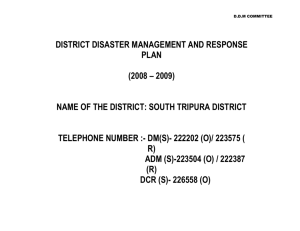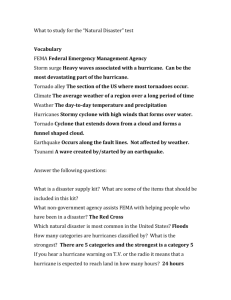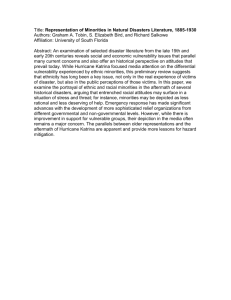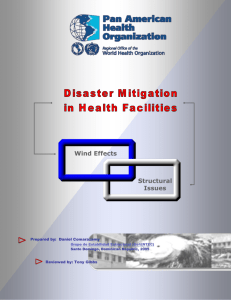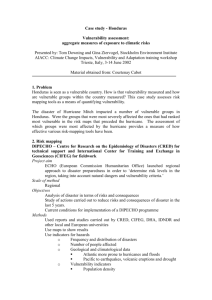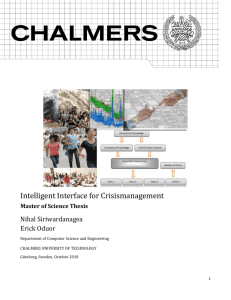And then something happened – UNIV 300i – C.M. Rodrigue Class
advertisement
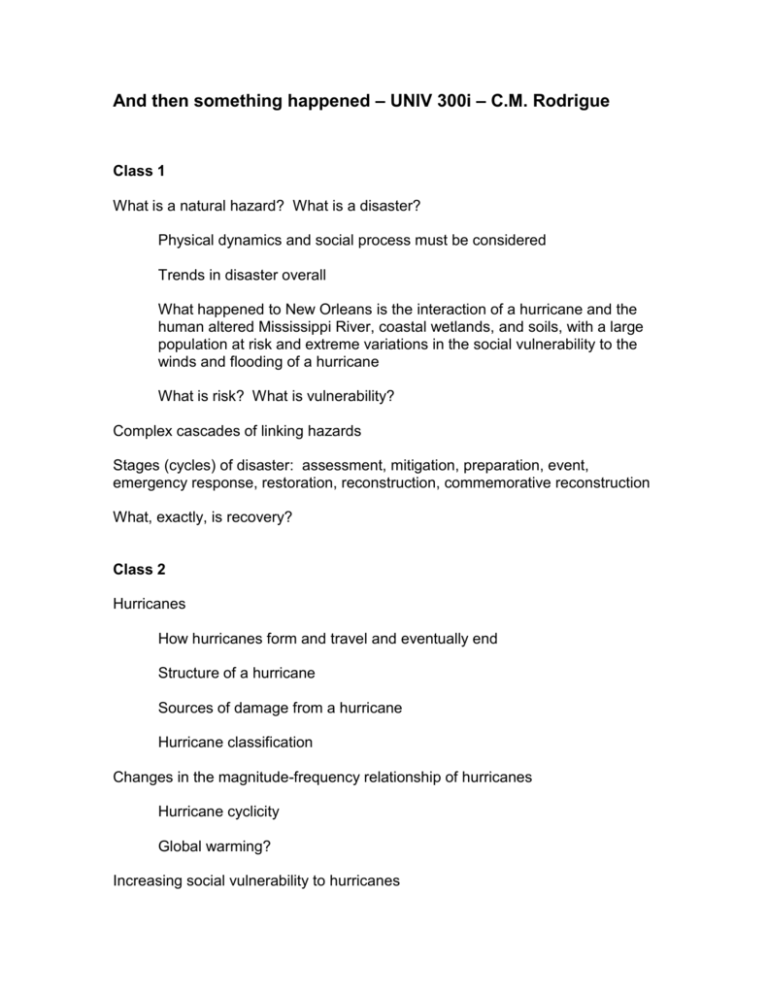
And then something happened – UNIV 300i – C.M. Rodrigue Class 1 What is a natural hazard? What is a disaster? Physical dynamics and social process must be considered Trends in disaster overall What happened to New Orleans is the interaction of a hurricane and the human altered Mississippi River, coastal wetlands, and soils, with a large population at risk and extreme variations in the social vulnerability to the winds and flooding of a hurricane What is risk? What is vulnerability? Complex cascades of linking hazards Stages (cycles) of disaster: assessment, mitigation, preparation, event, emergency response, restoration, reconstruction, commemorative reconstruction What, exactly, is recovery? Class 2 Hurricanes How hurricanes form and travel and eventually end Structure of a hurricane Sources of damage from a hurricane Hurricane classification Changes in the magnitude-frequency relationship of hurricanes Hurricane cyclicity Global warming? Increasing social vulnerability to hurricanes Class 3 Flooding: riparian, lacustrine, coastal Riparian: Old Man River How rivers behave The forces generated by moving water (F = ma) and a sideline on why the cemeteries failed How human society copes with these natural processes technologically: levees, floodgates Magnitude and frequency again How response to recurrent small magnitude floods creates vulnerability to the rare, large magnitude event Lacustrine flooding Bayous and oxbows Lac Pontchartrain Coastal flooding Tsunami Hurricanes: the surge, winds, tides How wetlands can protect a coast from the brunt of a hurricane Why the Gulf Coast is losing its wetlands The soils of New Orleans and the problem of subsidence: Making things worse Class 4 Hazard perception: generally faulty when compared with risk assessment science Hazard perception is a function of hazard experience Media and risk amplification and risk attenuation How media represent hazards and disasters: sensationalism, blameseeking, human conflict and drama, false balance in coverage, simplification, systematic social biases in normal coverage that may play out during a disaster Why are the media like this? the need for profit, ownership concentration, filtering Why is this important? Agenda-setting and risk communication How people behave during a disaster Evacuation and its hazards Looting Convergence Community self-organization How people behave between disasters Mitigation Preparation Denial Conflicts among competing demands on time and resources Class 5 How agencies behave during a disaster How government and non-governmental organizations learn of a disaster (media…) Models of institutional failure The difficult relationship between risk assessment science and risk management policy Risk assessment communication upward in a bureaucracy Risk management policy communication downward in a bureaucracy Cronyism in a bureaucracy compounds the underlying problem One model of effective response: incident command system Class 6 Risk and vulnerability Plans fail by treating human populations as undifferentiated person-units Who’s at risk? Who’s vulnerable? Axes of vulnerability: Class and income Race and its intersection with class and income Language Age Gender Mobility and disability Sexuality and stigma Culture and religion Mental illness What do you do with the incarcerated? (Mont Pélé in Martinique) Was Katrina/Rita a freak accident that no-one could have anticipated? Are other city-destroying disasters possible in our lifetimes? What can we in California learn about a hazard we don’t get in a place far, far away?


